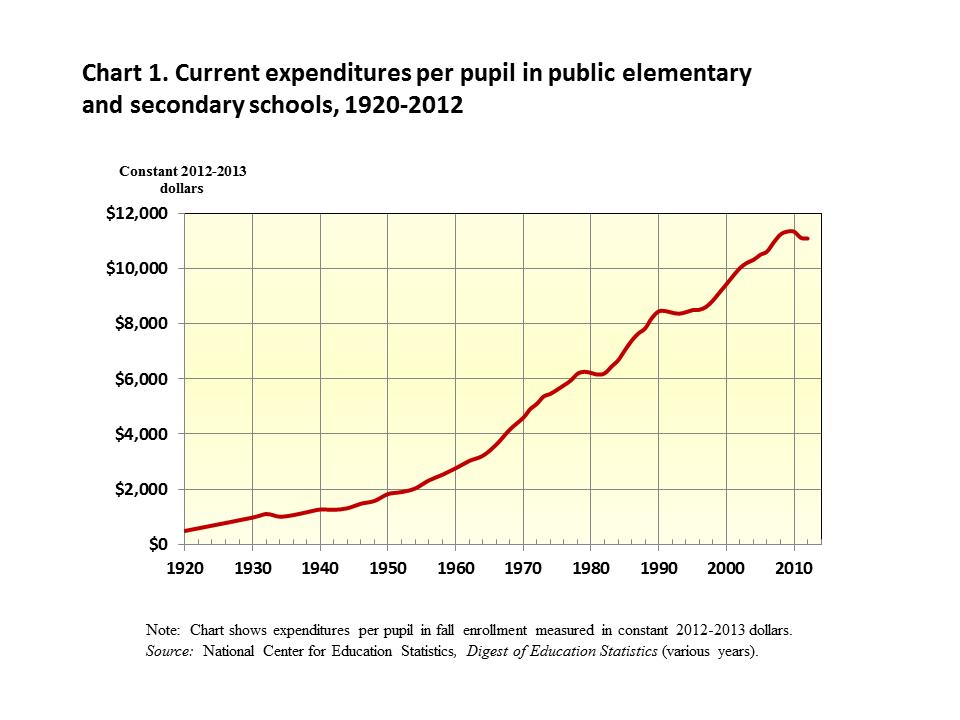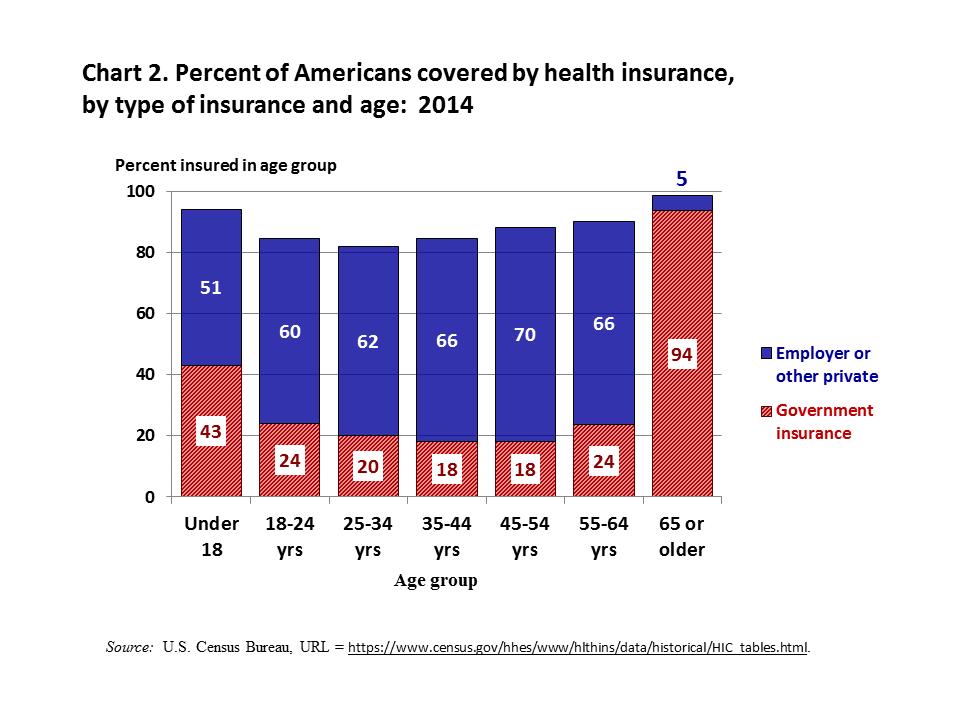Government spending on the elderly continues to climb. Fueled by rapid growth in the number of Americans over age 65 and increased spending on benefits per person, public expenditures devoted to the elderly continue to edge up. A crucial question for future policy making is whether rising outlays on programs for the aged will squeeze out spending on programs for children, especially investments in their schooling. Many pessimists think this outcome is inevitable, and they urge us to reduce government commitments to the elderly to make room for spending on the young.
Federal spending is especially concentrated on the elderly. The Urban Institute publishes annual estimates of federal outlays on children and adults over 65. The estimates inevitably show a huge imbalance in spending on the two groups. In 2011, federal spending for the elderly amounted to almost $28,000 per person over 65. In the same year, per capita spending on Americans under 19 amounted to just $4,900 per person. This means aged Americans received $5.72 in federal spending for every $1.00 received by a child 18 or younger.
The Urban Institute’s latest estimates show that federal spending on youngsters has trended down in recent years. After reaching a peak of about $500 billion in 2010, expenditures on children fell 7 percent by 2012, and they have remained unchanged since then.
Future prospects are not encouraging. Urban Institute analysts predict that from 2014 to 2025, only 2 percent of federal spending growth will go to children. Almost 60 percent will be swallowed up by additional outlays on Social Security, Medicare, and Medicaid. Spending on many federal programs that provide benefits to children are financed out of discretionary programs. In contrast, big public programs for the aged seem to run on automatic pilot, with spending linked to changes in the cost of living and the size of the population past 65. Spending on most domestic discretionary programs is expected to be severely constrained as a result of Congressionally imposed budget caps. This is bad news for many federal programs targeted on children.
Focusing solely on federal government spending gives a misleading picture, however. While federal spending is heavily concentrated on the elderly, state and local spending tilts toward programs that help children, notably, through public school budgets. Whereas aged Americans receive $5.72 in federal spending for each $1.00 received by someone under 19, those under 19 receive $10.11 in state and local spending for each $1.00 received by someone who is 65 or older. To be sure, total federal spending is considerably greater than that of state and local governments, but the imbalance of public spending on the young and the old is less extreme than federal budget statistics suggest.
Government spending on the aged is high because legislators (and voters) decided to establish government-backed pensions—through Social Security—in the 1930s and government-guaranteed health insurance for the elderly—through Medicare—in the 1960s. In view of the overwhelming and enduring popularity of these two programs, most voters appear to think this was a sensible choice. One implication of the policies is that Americans past 65 derive a sizable percentage of their retirement income, and an even bigger share of their health care, from public budgets.
The nation has not made an equivalent commitment to support the incomes or guarantee the health insurance of Americans under 65, except in special circumstances. Those circumstances include temporary unemployment, a permanent work disability, and low household income. Families headed by someone under 65 are expected to derive their support mainly from their jobs and from their own savings. If non-aged families prosper, government spending on them falls. If instead breadwinners become disabled or lose their jobs, government spending will increase as a result of higher disability payments, unemployment and food stamp benefits, and public assistance rolls.
Nearly all children are raised in families headed by someone under 65. The government benefits they receive, except for free public schooling, increase in bad times and should decline when the unemployment rate falls. The Urban Institute’s numbers are instructive. Between 2007 and 2011, real federal spending on children increased 27 percent, or more than 6 percent a year, as the unemployment rate soared in the Great Recession. Federal spending on children then fell as unemployment—and outlays on government transfer payments—shrank. For many categories of public spending on children, we cannot assume that lower spending signals a weaker commitment to children’s well-being. Instead it may signal a healthier private economy, a lower unemployment rate, and faster improvement in breadwinner incomes.
Of course, some components of government spending on children do not automatically rise in a slumping economy or shrink when breadwinners’ earnings improve. Public investments in children’s preschool and K-12 education should be adjusted to reflect the needs of children for compensatory instruction and the expected payoff of added investment in schooling. Statistics on public school budgets show that spending per pupil has increased considerably faster than inflation and faster than GDP per person over the past seven decades (see Chart 1). Whether spending has increased as fast as warranted is debatable, but rising government spending on the aged has not caused per-pupil spending on K-12 schools to shrink.

Government spending on children’s health has also increased over time as public insurance for children has been expanded. In 2014 just 6 percent of Americans under age 19 lacked health insurance for the entire year. The only age group with higher health insurance coverage was the population past 65, which is covered by Medicare (see Chart 2). The main explanation for rising insurance coverage among children is that federal and state health insurance programs have been expanded to cover most low-income children. Insurance coverage of children can and should be improved, but a sizeable expansion of public insurance has occurred despite the increase in public spending on the elderly.

The presumption that rising outlays on programs for Americans past 65 must come at the expense of spending on children rests on the unstated assumption that voters will zealously defend programs for the aged while tolerating cuts in programs that fund education, income protection, and health coverage for the young. The trend toward higher public spending on the elderly has been underway for at least five decades, but the predicted cuts in spending on the young have yet to materialize.
Editor’s Note: this op-ed first appeared in Real Clear Markets.



Commentary
Op-edGenerational war over the budget? Hard to see it in the numbers
December 2, 2015